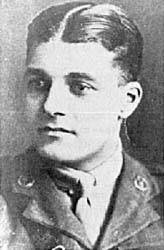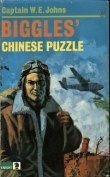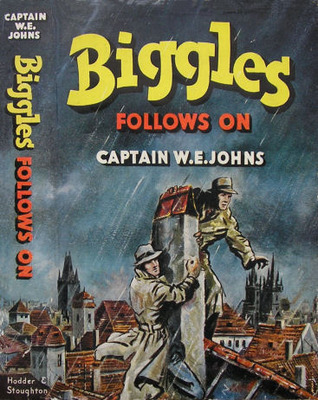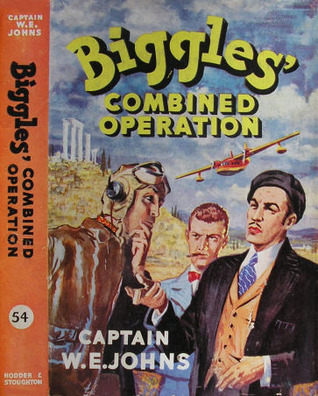
Part of Series
This is the story of how Biggles missed a visit to the pictures and chanced upon one of his most hazardous adventures. The facts were laid before him. Professor Becklinder, a naturalised Lucranian, had discovered the formula for a deadly poisonous gas. While on sick leave from England he had been reported killed, but in doubtful circumstances. British Intelligence were vitally interested in establishing the truth behind the report, and it was Biggles' job to discover whether the Professor was really dead and, if not, who had captured him and where he was. The first grisly step in the investigations was to open the Professor's grave an examine the body, if one existed - a horrible undertaking, but one that desperate necessity justified, in Biggles' view. Intrepid as ever, he and his friends, Algy and Ginger, ploughed through the whole dangerous gamut of espionage, captivity, escape and rescue, in their attempts to solve the mystery of the Professor's disappearance.
Author

Invariably known as Captain W.E. Johns, William Earl Johns was born in Bengeo, Hertfordshire, England. He was the son of Richard Eastman Johns, a tailor, and Elizabeth Johns (née Earl), the daughter of a master butcher. He had a younger brother, Russell Ernest Johns, who was born on 24 October 1895. He went to Hertford Grammar School where he was no great scholar but he did develop into a crack shot with a rifle. This fired his early ambition to be a soldier. He also attended evening classes at the local art school. In the summer of 1907 he was apprenticed to a county municipal surveyor where he remained for four years and then in 1912 he became a sanitary inspector in Swaffham, Norfolk. Soon after taking up this appointment, his father died of tuberculosis at the age of 47. On 6 October 1914 he married Maude Penelope Hunt (1882–1961), the daughter of the Reverend John Hunt, the vicar at Little Dunham in Norfolk. The couple had one son, William Earl Carmichael Johns, who was born in March 1916. With war looming he joined the Territorial Army as a Private in the King's Own Royal Regiment (Norfolk Yeomanry), a cavalry regiment. In August 1914 his regiment was mobilised and was in training and on home defence duties until September 1915 when they received embarkation orders for duty overseas. He fought at Gallipoli and in the Suez Canal area and, after moving to the Machine gun Corps, he took part in the spring offensive in Salonika in April 1917. He contracted malaria and whilst in hospital he put in for a transfer to the Royal Flying Corps and on 26 September 1917, he was given a temporary commission as a Second Lieutenant and posted back to England to learn to fly, which he did at No. 1 School of Aeronautics at Reading, where he was taught by a Captain Ashton. He was posted to No. 25 Flying Training School at Thetford where he had a charmed existence, once writing off three planes in three days. He moved to Yorkshire and was then posted to France and while on a bombing raid to Mannheim his plane was shot down and he was wounded. Captured by the Germans, he later escaped before being reincarcerated where he remained until the war ended.


